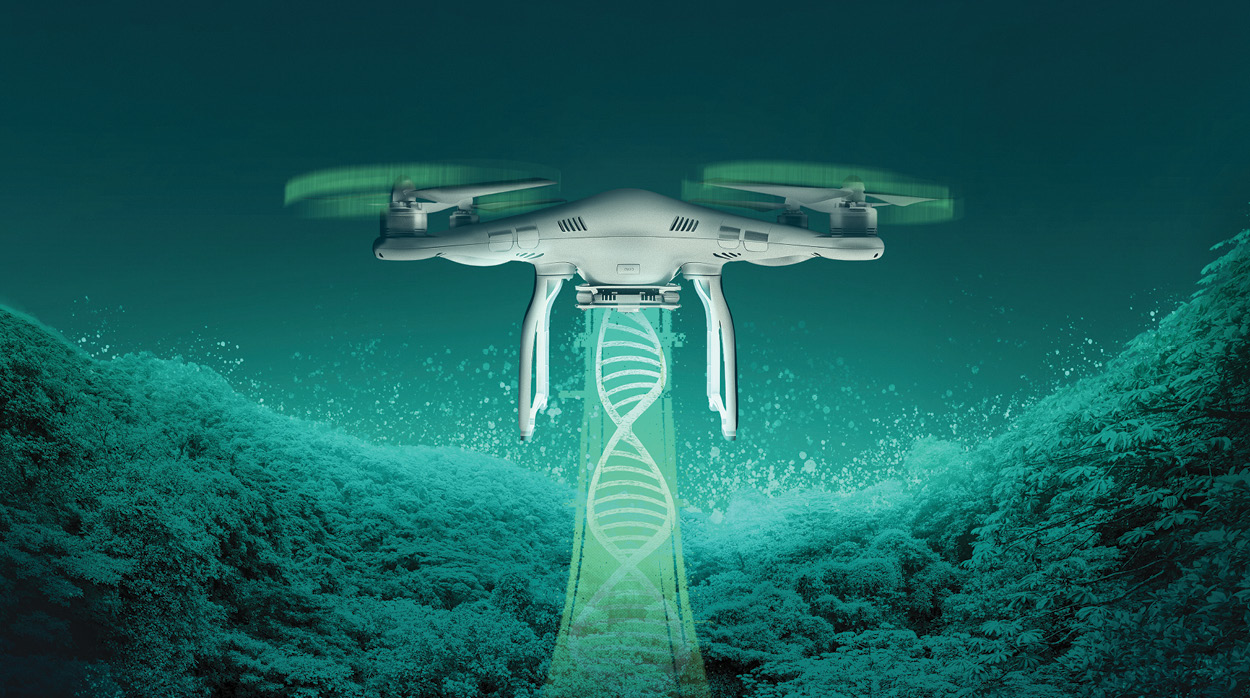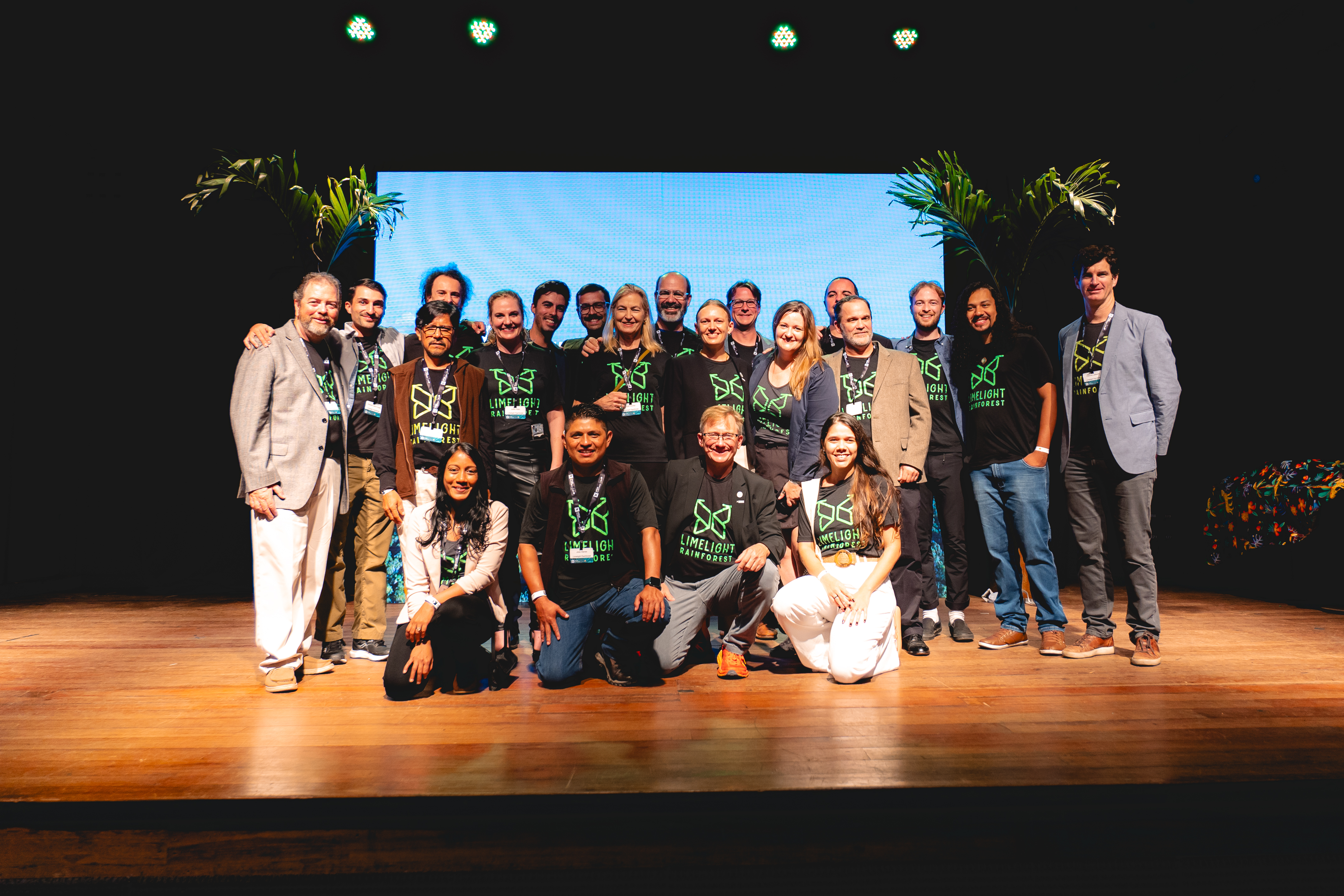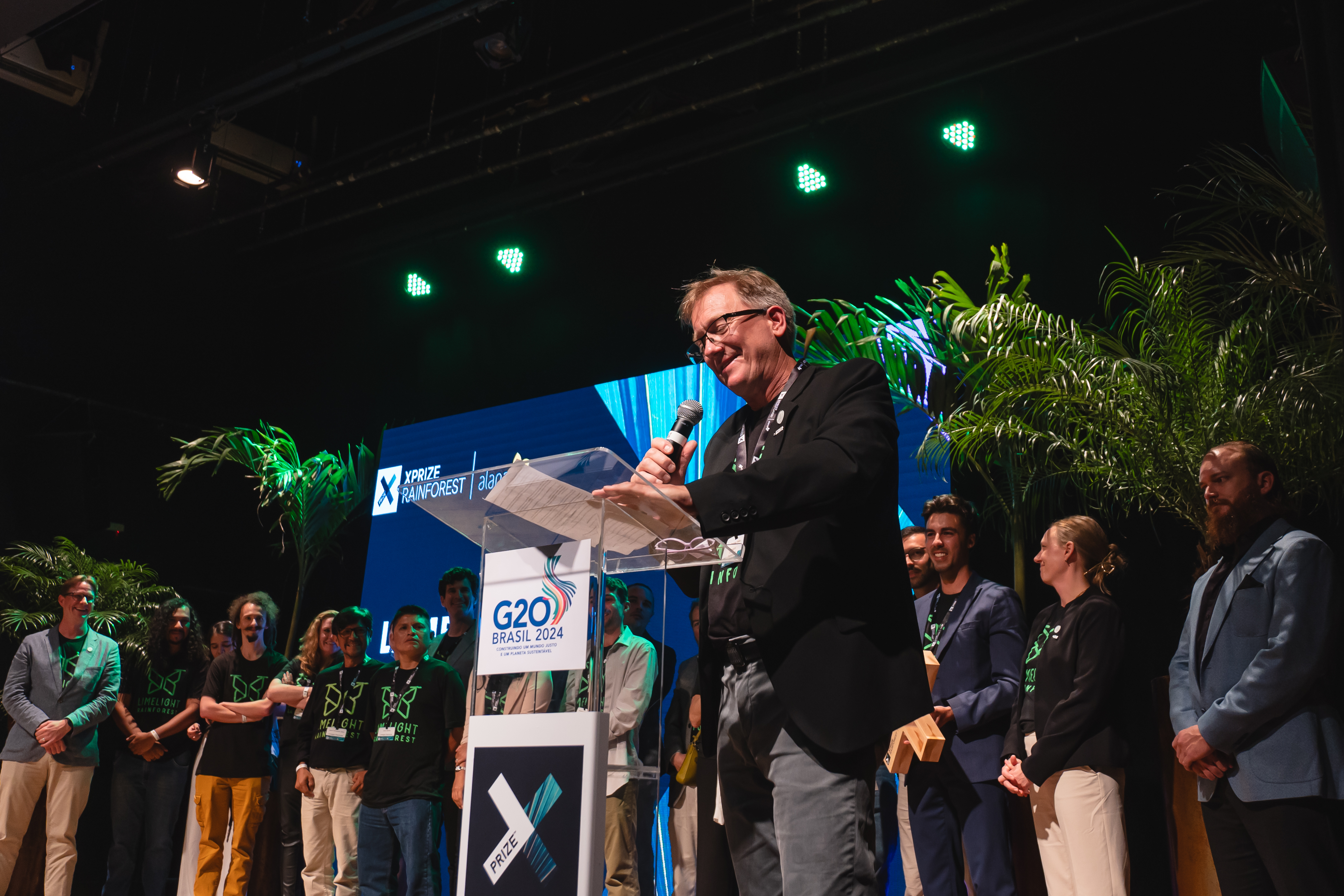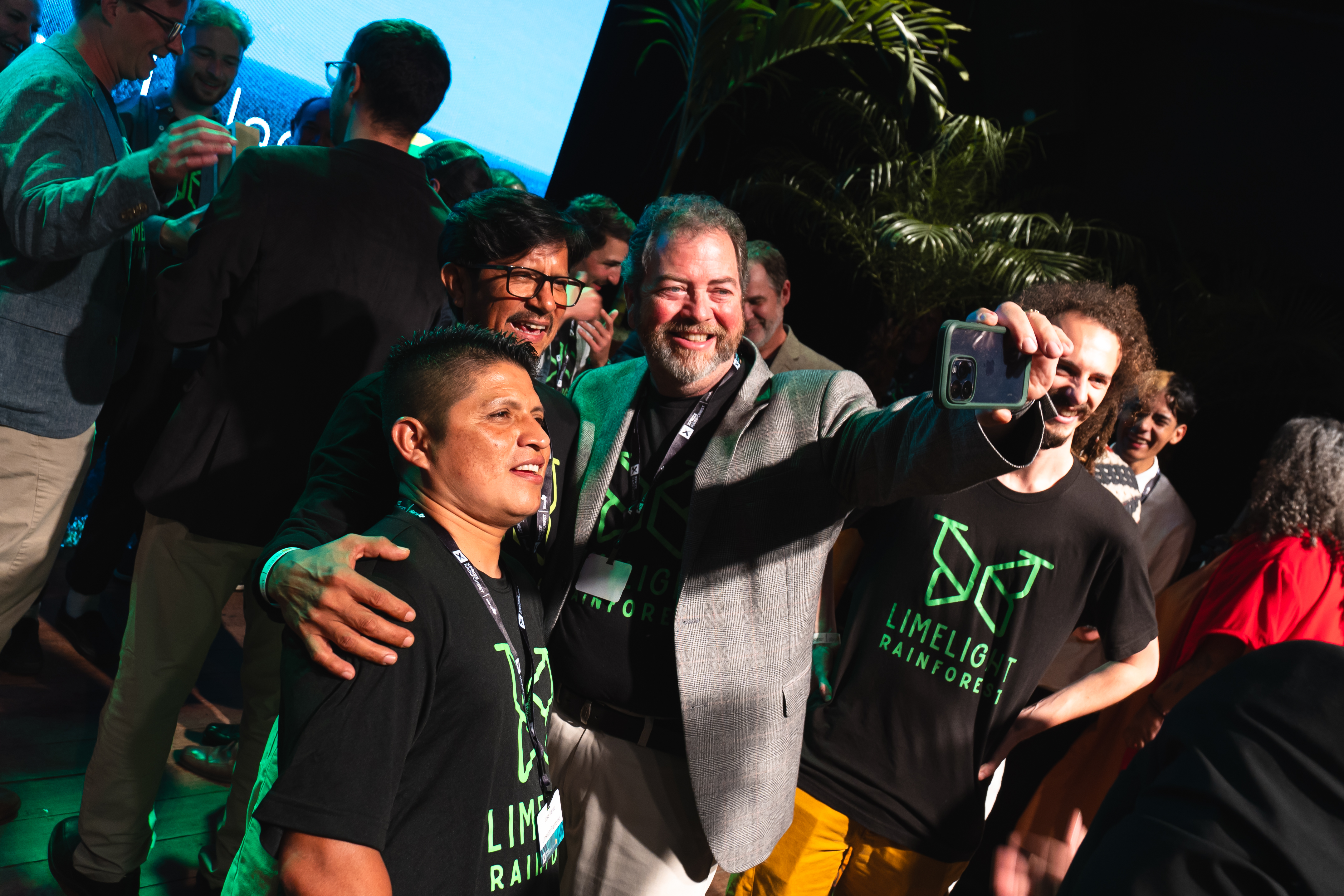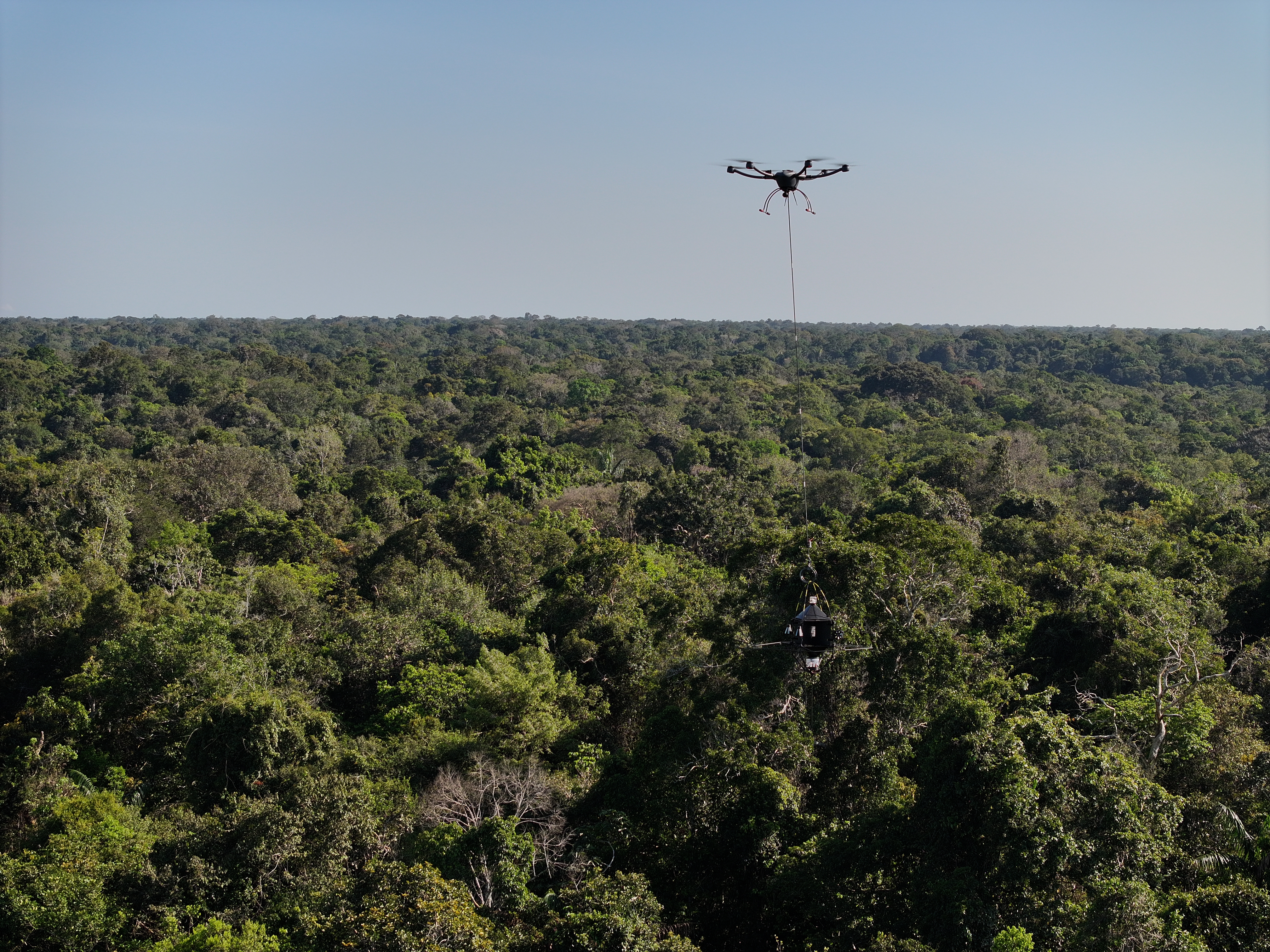A team of CMU faculty and students triumph in the global race to save the rainforest
Tropical rainforests are one of the most complex ecosystems on planet Earth. Equally as complex is the lingering question, ‘How do we save them?’
Some of the oldest rainforests in the world can be found in Southeast Asia, specifically the southern tip of the Malay Peninsula, Singapore. The island nation is home to over 5 million people, sharing the land between urban development and the rainforest alike. In the spring of 2023, it was in this metropolitan city that a group from Grand Junction, Colorado, deboarded a plane with the mission to make change, no matter the impact. Little did they know at the time, their research would eventually lead them to Brazil where they’d be crowned international stewards of the rainforest and be awarded $5 million dollars.
Team Limelight Rainforest, composed of a dozen CMU faculty and students alongside an international team of Indigenous people and academics representing more than seven institutions, was one of six teams selected to compete in the semifinals of the global XPRIZE competition to save the rainforest. This five-year, million-dollar competition aimed to accelerate innovation in biodiversity monitoring and conservation through cutting-edge technology. It was a mighty challenge, but that didn’t deter over 300 teams from 70 countries from trying.
To win, groups had to survey as much biodiversity as possible in 24 hours within 100 hectares of tropical rainforest. Then they had another 48 hours to process that data into a real-time, meaningful analysis.
The work by Team Limelight began long before their trip to Southeast Asia. The team, led by CMU Professor of Biology Thomas Walla, PhD, first started developing the technology for the competition in 2019, with the intention of not only advancing scientific research but also providing a meaningful, hands-on experience for CMU students. While the subject matter of rainforest conservation is Walla’s bread and butter, he wasn’t necessarily in it to win it. He even considered it a ‘longshot.’
“I thought it unlikely we would get past the very beginning,” reflected Walla, adding that a critical component of a successful team is having deep pockets and sound fundraising, which many of the other teams had. “We did it on a shoestring budget, we did it with volunteers, we did it with passion,” said Walla.
Walla was quick to discover his team was different. At four thirty in the morning, the group crammed into a van amidst Singapore’s sweltering heat and humidity on their way to the rainforest. The team was clearly dedicated, eyes wide at the opportunity before them. They were ready to position themselves as talented, viable competitors.
They did indeed advance beyond the first leg of the competition and soon packed their bags and traveled to one of the most biodiverse and unforgiving environments on Earth. In July 2024, Team Limelight took on the final stretch of the competition: tackling the Amazon Rainforest.
In Brazil, the team was challenged both physically and mentally. Adding to the challenge’s complexity, the team had to collect DNA samples in the heart of the rainforest using remote cameras and microphones. Battling the hot, humid environment, the team prioritized keeping the machines at a regulated temperature to prevent them from overheating.
To capture as much data as possible, the team spent hours through the day and night managing drone and facial recognition technology. CMU student Taylor Schmitz remembers going days without sleep, being beyond exhausted but persevering to get the job done. While her friends and classmates were back in the States — mostly unaware of what she was doing in Brazil — Schmitz was pushing the technological boundaries of sequencing remotely.
“Sophisticated software experts developed these systems to recognize faces, but we can use them to recognize insects,” explained Walla. “And when we can now recognize insects with a computer, that increases our speed of detections and identification by 100,000 times. It’s unbelievable the number of insects we can identify now compared to only five or six years ago.”
The same technology can be applied to sound. So, while they collected data on the insects below the canopy, they also used drones to capture the sound waves of birds high above the forest floor to analyze the sonograms. The drones were also used to pump water from the jungle floor so the team could extract and measure DNA cells left in the water. A wide variety of species were identified — from jaguars and monkeys to pink river dolphins.
According to Walla, while existing technologies can sequence around 1,500 species over two years, Limelight has the potential to sequence 2,500 species in just one week. The precision, accuracy and speed of their technology would later garner the attention of the XPRIZE judges.
While technological capabilities contributed heavily to the success of Team Limelight, one of the most instrumental drivers towards success had to be the people involved.
Years ago, when the team began to form, each member brought a sophisticated and specialized skillset, talent and an abundance of humility. They recognized that where one person may lack expertise, another person’s strength could cover the difference. Taking on the challenge with an interdisciplinary approach, participants from different departments and fields around campus brought their best to the table for the betterment of rainforest research.
“Dr. Weeks is an excellent geneticist, evolutionary biologist and ecologist. She applied her field work of collecting frogs in the Colorado River and looking at their DNA and brought that to the Amazon,” said Walla.
Mentoring two students through the project, Weeks recorded hours of sound early in the competition that was later used to train Team Limelight’s models to identify the birds and frogs of the Amazon. However, with hours of collected data on hand, the team needed someone on deck with the capabilities to digest and translate it all into comprehensive information. This is where Associate Professor of Biology Johanna Varner, PhD, shined.
“Dr. Johanna Varner is an absolutely brilliant strategist who can purify complex data from many different fields and communicate that information so clearly that anybody could understand who is interested in understanding,” added Walla.
Additional faculty members who made meaningful contributions include Assistant Professor of Computer Science Sherine Antoun, PhD, Associate Professor of Computer Science Karl Castleton, Assistant Department Head of Computer Science and Engineering/ Professor of Mechanical Engineering Sarah Lanci and CMU Tech Technical Instructor of Mechatronics Robbi Grimm.
The final piece of the puzzle required the help of CMU Professor of Political Science Tim Casey, PhD, who applied his expertise in political science to help adapt the technology so local and Indigenous communities could use it. Casey’s help ensured that the team’s efforts would have lasting, real-world applications beyond the competition.
Not to mention, this was a unique opportunity for undergraduate student research. CMU biological sciences major Matthew Pederson brought to the team his skills in specimen processing, linguistics and machine learning.
CMU student CJ Christensen also leveraged his machine learning skills alongside Pederson. CMU student Tad Hittle contributed his knowledge of data transfer technology and Schmitz performed incredible work on the genetics team.
The breadth of interdisciplinary efforts paid off. On Friday, November 15 at the G20 Social Summit in Rio de Janeiro, Brazil, Team Limelight Rainforest won first place.
“We launched XPRIZE Rainforest with an audacious goal to accelerate the innovation of novel biodiversity assessment technologies that could effectively transform the rate at which we measure and protect global biodiversity and we’re so proud to be awarding the grand prize to the fantastic Limelight Rainforest team led by faculty from Colorado Mesa University,” said XPRIZE Executive Vice President for Biodiversity and Conservation Peter Houlihan. “Their work throughout the course of the competition was nothing short of remarkable, and the Limelight sensor platform can measurably and more rapidly improve insights we can gather from the most under-researched layer of the rainforest,” he said.
In the end, it wasn’t just their technology or innovative ideas that set them apart. Every member of Team Limelight Rainforest displayed a deep commitment to a cause greater than themselves. They weren’t just collecting data; they were providing a lifeline for the rainforest, ensuring that the beauty and biodiversity of these ancient forests would be preserved for generations to come.
Winning the XPRIZE was more than a victory for the team — it was a victory for the planet’s future. It marked a new chapter in the fight for biodiversity conservation, where the intersection of technology, passion and collaboration can make a tangible difference.
Their success proved that even the most ambitious challenges are not insurmountable when people come together with purpose, vision and a shared determination to protect the world’s most vital ecosystems.
